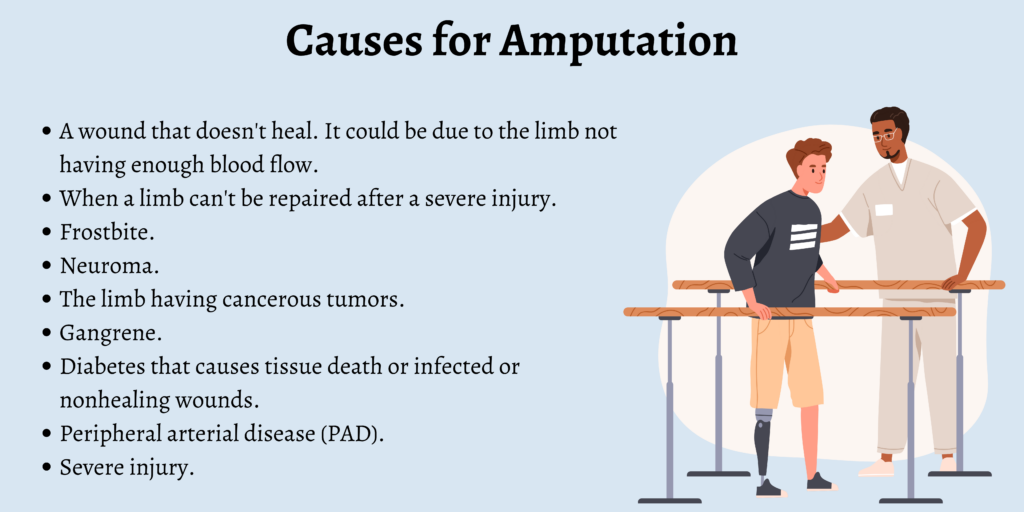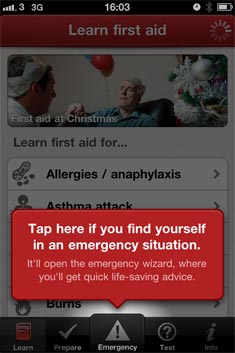First Aid for Amputation: Quick Actions for Amputation
According to research, each year, about 150,000 patients in the United States go through a lower extremity amputation.
An amputation refers to a surgery where all the limbs or a part of a limb or extremity are removed. This kind of surgery is usually recommended by a doctor due to a traumatic injury or a chronic disease. Some of the most common kinds of amputations include:
- Above-knee amputation, which entails removing a part of the toes, foot, shin, knee, and thigh.
- Below-knee amputation, which means removing the toes, foot, and lower leg.
- Hand amputation.
- Arm amputation.
- Toe amputation.
- Foot amputation.
Research conducted in 2020 revealed that with the advancement of preventative techniques, amputation rates have gone down in the United States. However, the amputations that are related to chronic conditions, such as diabetes, have either often gone higher or remained the same.
While first aid for amputation mainly involves knowing about the recovery process, I would say it’s crucial to learn about it so that if you know someone who has been through amputation, you can somehow help them in their recovery process.
In this article, we will be discussing the causes of amputation, the risks and complications involved, and what the recovery process looks like following an amputation.
Causes
Amputations are often required to stop an infection from spreading through the limbs, and they may also be necessary to manage pain. A couple of the common causes of an amputation are as follows:

- A wound that doesn’t heal. It could be due to the limb not having enough blood flow.
- When a limb can’t be repaired after a severe injury.
- Frostbite.
- Neuroma.
- The limb having cancerous tumors.
- Gangrene.
- Diabetes that causes tissue death or infected or nonhealing wounds.
- Peripheral arterial disease (PAD).
- Severe injury.
What Happens After an Amputation?
Here is what happens after an amputation:
- The patient is required to remain in the hospital for a couple of days. Certain people are asked to stay for one or two weeks.
- The patient’s healing and progress are tracked by the surgical team.
- Pain medications could be given to relieve the person of any discomfort. Antibiotics may be involved to prevent infection.
- After a few days of the surgery, the patient will begin to work with a physical therapist.
- Some patients also go to a rehabilitation center so that they can learn to regain their independence following the surgery.
Risks and Complications
Much like any other surgery, there are some risks and complications associated with an amputation. Those risks include:
Recovering After an Amputation
The time it takes for a person to recover after an amputation depends on:
- The limb that was amputated.
- The complexity of their surgery.
- Whether they are using a prosthetic limb or not.
Patients usually start to use a prosthetic limb almost two months following their surgery. It could take them anywhere between two to six months to learn how to use it. It can take time for a person to learn how to function and move around without their natural limb.
Staying in touch with your healthcare provider is crucial during this time so that any issues that crop up can be managed accordingly and efficiently.
When to See Your Healthcare Provider
There are different people in the healthcare team a patient might have to reach out to while they recover. This is what one should know about getting in touch with these respective individuals:
- Call the surgeon if there are new signs of infection on the stump.
- Call the physical therapist if you experience challenges or stiffness in your movement.
- Call the prosthetist if the artificial limb doesn’t fit correctly or if it pinches or rubs.
- Call the mental health professional if you experience depression or anxiety due to the changes in your body.
FAQs
1. What happens when a leg is amputated?
When a leg is amputated, it could be swollen for about four weeks after the surgery. There could be bandages, dressing, or a cast over the remaining limb.
2. Can you walk with an amputated leg?
Those who have an amputated leg could require crutches, a walker, or a cane to walk with a prosthetic leg.
3. What disease causes amputations?
Some of the diseases that cause amputations are diabetes, blood vessel disease, and osteomyelitis (an infection of the bone).
4. What is the most amputated body part?
Lower limb amputations are the most common kind of amputation.
5. Can you walk with two amputated legs?
Although walking with two amputated legs is difficult, it can still be done.
Conclusion
A person could need surgery due to a disease, infection, or serious injury. Following the surgery, it may take the patient a while to learn how to move and live without their natural limb, and they will require physical therapy to regain their mobility, balance, and strength.
Once you get an amputation surgery done, request your healthcare provider to refer you to a mental health counselor or psychologist so that you can get help in dealing with the mental health challenges that come with such a life-changing event.
Even though it’s a serious procedure, it’s still possible to lead a healthy and full life after going through an amputation.





